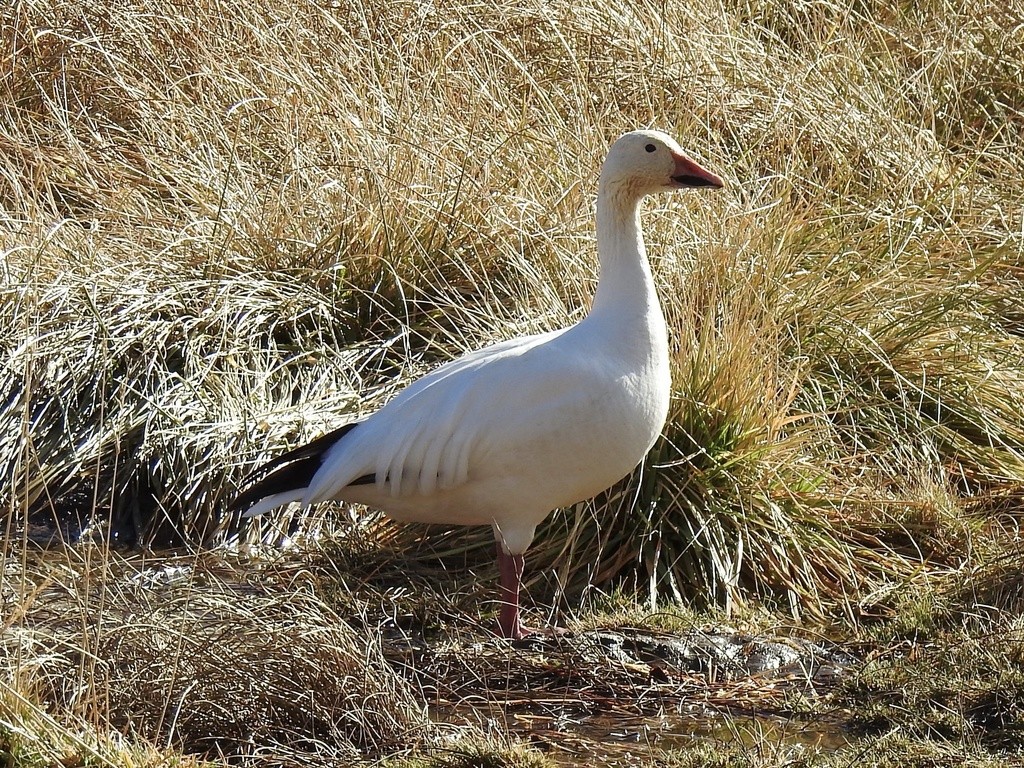Snow Goose
A species of White geese Scientific name : Anser caerulescens Genus : White geese
Snow Goose, A species of White geese
Botanical name: Anser caerulescens
Genus: White geese
Content
Description General Info
Description
The snow Goose is a migratory bird that inhabits the Arctic tundra and North America. With its white plumage and black wingtips, it is a distinctive and easily recognizable bird. During migration, the Snow Goose forms large flocks and travels long distances to reach its breeding and wintering grounds. It feeds on a variety of plants and roots in the Arctic and waste grain in agricultural fields during migration. 
Size
41 - 81 cm
Life Expectancy
25 years
Nest Placement
Ground
Clutch Size
2 - 6 eggs
Incubation Period
1 brood
Number of Broods
24 days
Nestling Period
1 day
Feeding Habits
Snow Goose predominantly consume plant material, grazing on grasses, sedges, rushes, forbs, horsetails, shrubs, and willows. They eat seeds, stems, leaves, tubers, and roots by shearing or pulling up entire stems. During winter and migration, they adapt to include grains, farm crop stems, and berries, while goslings may consume fruits, flowers, horsetail shoots, and insect larvae.
Habitat
Snow Goose's habitat encompasses the Arctic tundra and adjacent coastal regions for breeding, especially near water bodies. They favor rolling landscapes with minimal snow coverage. For brood-rearing, these birds choose grass and bryophyte-rich terrains. During migration, snow Goose frequents open farm fields, marshes, and riverbanks. Wintering areas for snow Goose extend to American coastal and inland zones, including grasslands, marshes, and agricultural fields.
Nest Behavior
The female snow Goose, accompanied by the male, selects the site and constructs the nest, adding materials as egg-laying progresses. Nesting timing, egg-laying patterns, and parental care are specific to species but involve both parents in rearing the young.
Nest Characteristics
Snow Goose typically nests in sheltered sites among vegetation, on dry ground near melted snow. These locations can include island sites or by small ponds. Nest construction involves a simple scrape in the earth lined with down feathers and possibly sea-lyme grass, eelgrass, willow, birch, or seaweed, ranging 3 to 6.5 feet across.
Dite type
Herbivorous
General Info
Feeding Habits
Bird food type
Sounds
Call
Recording location: United States
Call
Recording location: United States
Call
Recording location: United States
Behavior
Snow Goose exemplify a robust nature, engaging in a variety of daily activities that include feeding on vegetation by foraging on foot, and resting by sitting, standing on one leg, or floating on water. They are notable for their strong capabilities in flight, walking, and even short-distance diving when facing danger. With a propensity for nocturnal roosting during migratory and winter periods, snow Goose are also known for their lifelong monogamous partnerships, often choosing mates that share their own color morph. An integral part of their distinct behavior is the female's dedicated incubation of the eggs, while the male fulfills a protective role, safeguarding the nest from a suite of predators that threaten both their eggs and young. This collective vigilance of the female and male ensures the species' resilience in the face of numerous natural threats.
Species Status
The late 1990s was when the mid-continent population of snow geese was recognized as causing significant damage to the arctic and sub-arctic breeding grounds which was also causing critical damage to other varieties of waterfowl species and other wildlife that uses the arctic and sub-arctic grounds for home habitat. The increase in population in substantial amounts raised concern to then DU chief biologist Dr. Bruce Batt who was part of a committee that put together various data and submitted it to the U.S. Fish and Wildlife Service and the Canadian Wildlife Service with the recommendation on ways to combat the growing population and the damage that the snow geese were creating in the arctic breeding grounds. The committee recommended relaxing hunting restrictions and giving hunters a better opportunity to harvest more snow geese on their way back to the breeding grounds in the spring. The suggested restrictions were to allow the use of electronic callers, unplugged shotguns, extended shooting hours, and no bag limits. Two years after the Light Goose Conservation Order was introduced it was federally mandated in 1999. 
